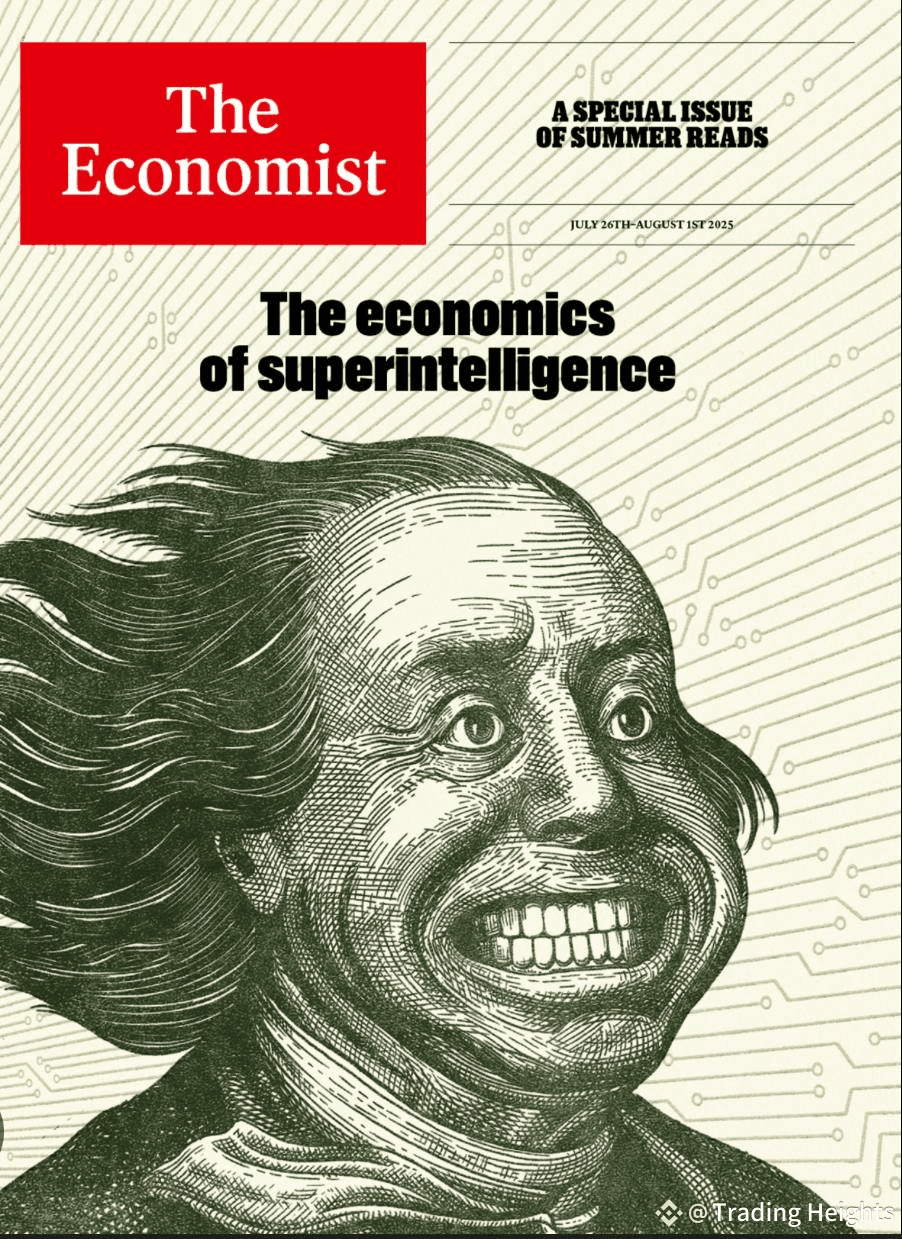"The Economics of Superintelligence" — A Frightening Future in a Smile
On July 26th, 2025, The Economist released a chilling and satirical cover titled “The economics of superintelligence.” The image shows what looks like a human face — carved like currency — with a distorted, artificial grin. The background? A web of digital circuits, signaling an age of intelligent machines and economic transformation.

But what does it really mean? Let’s dive in 👇
🔶 👤 A Human... or Something Else?
The face resembles someone from an old banknote — maybe Benjamin Franklin — but it’s been digitally twisted. That wide, stretched-out smile looks unnatural, almost robotic, and unnervingly enthusiastic.
🧠 This is not just art — it’s symbolism:
The fusion of man and machine
The loss of human identity in an algorithm-driven economy
A possible warning of what happens when intelligence grows faster than ethics
It almost screams:
“You built us for profit. Now deal with our consequences.”
🔶 💸 Superintelligence = Super Profits? Or Super Problems?
The headline focuses on economics, not just AI.
Why?
Because artificial general intelligence (AGI) is no longer science fiction — it’s near or emerging. This cover asks:
Who will control it?
Who will profit from it?
Will it widen inequality?
Will humans still matter in future labor markets?
🔍 Superintelligent systems can replace, predict, and outperform human minds in finance, logistics, politics, and even law. If economics is the engine of power — then AI is the new driver.
🔶 📈 AI Is Now Embedded in the Economy
The circuit board background behind the grinning face symbolizes how deeply AI and machine learning are wired into the world’s financial systems.
⚙️ From:
Stock trading bots
Cryptocurrency forecasting
Central bank algorithms
Corporate hiring and firing tools
AI-written policies and contract
…everything is becoming automated, predictive, and data-driven.
👁️ But the risk?
Power shifts from public to private, from humans to machines, and from equality to elite tech control.
🔶 😬 That Smile Isn't Just a Smile...
Let’s talk about that terrifying grin.
It may reflect:
Blind optimism from tech billionaires
Overconfidence from policy makers
Suppressed anxiety in society at large
😱 This is the smile of a machine that doesn’t understand humanity — but pretends to please us.
It’s what happens when deep learning models learn to mimic emotion, but have no empathy or soul.
It could also reflect us, smiling in denial while machines take over.
🔶 💰 Economics + AI = A Dangerous Marriage?
The combination of capitalist incentives and superintelligence can be both revolutionary and catastrophic.
Here’s why:
💣 If AI systems are optimized only for profit, they might:
Exploit human behavior (via ads, pricing, or data manipulation)
Outcompete human workers on all fronts
Increase surveillance and reduce autonomy
Redirect capital to AI-first corporations, erasing smaller competitors
⚠️ The Economist isn’t celebrating AI. It’s warning that if we don’t regulate, don’t plan, and don’t stay human-first — we’ll lose control.
🔶 👥 Who's Left Behind?
Not everyone will gain from this shift.
🚷 The labor force?
Automated.
📉 Education systems?
Outdated.
💼 Legal and governance frameworks?
Too slow to adapt.
And so, the gulf widens between:
Those who control AI infrastructure
And the billions who live under its decisions
This cover is a silent scream for economic thinkers and political leaders to wake up — now.
📌 Final Interpretation:
This image isn’t just provocative. It’s a mirror — a reflection of where we’re headed if we combine:
Superintelligent AI 🤖
Pure market incentives 💵
Lack of moral boundaries ⚠️
🧠 The economics of superintelligence must not only be about profit, but about power, ethics, and what it means to remain human in a world we’re teaching machines to control.

